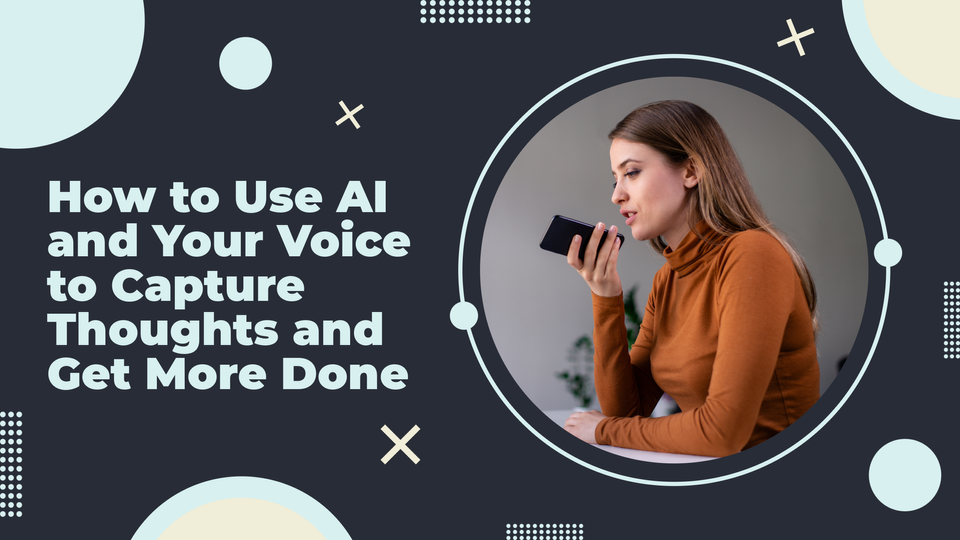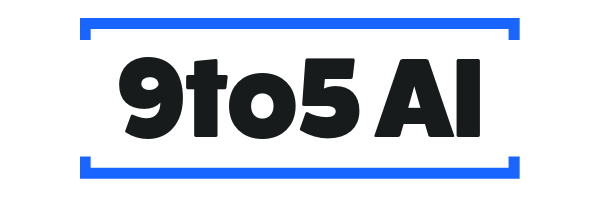Supercharge Your Thoughts: Leveraging AI and Voice for Seamless Idea Capture

Hey there! Welcome to edition No. 3 of 9to5 AI.
When thinking about how generative AI can be helpful to you at work, the first tangible use case I share with my team is voice memos. Why?
Everything is in our heads and often times, you'll think that writing it down will help. It does, but what you start to realize is that the process of writing down thoughts involves a level of subconscious filtering.
Is this worth writing down? How should I write this down? 9 times out of 10 what ends up in my notebook, sticky, or to-do app is a watered down version of the detailed project, activities and outstanding items I have floating in my head.
There's where voice memos and generative AI come in. With voice memos, I can just talk, talk, talk. I'm not worried about rambling. I just need to get things out of my head.
That voice memo can then be transcribed. This is pretty common amongst journalists, for example, but the grunt work comes when combing through that transcript. That's where generative AI kicks in. Instantly, you're able to feed a long transcript and ask it to do anything with it.
That's what this post is about. You'll get some and some specific prompts you can use. This is useful at work for many reasons but it's also something I do to manage things around the house and for this newsletter.
Eager to hear what you think so feel free to reply with your thoughts and reactions 😄
In today's fast-paced world, we're constantly bombarded with information. It's no wonder that our thoughts can feel like fleeting butterflies, flitting in and out of our consciousness before we can even grasp them. But what if there was a way to capture those thoughts effortlessly, and then use them to fuel our creativity and productivity?
Enter the power of AI and voice recordings. This dynamic duo is revolutionizing the way we capture and process information, making it easier than ever to hold onto our ideas and unlock their full potential.
The Importance of Capturing Your Thoughts in the Moment
Have you ever had a brilliant idea, only to forget it moments later? Or maybe you've found yourself struggling to recall important details from a meeting or conversation. These are just a few of the challenges we face when we rely solely on our memory to capture our thoughts.
The truth is, our thoughts are ephemeral. If we don't capture them in the moment, they're likely to be lost forever. This can have a significant impact on our creativity, productivity, and overall well-being.
By capturing our thoughts, we can:
- Reduce stress and anxiety: Knowing that we have a record of our thoughts can help us to feel more organized and in control.
- Boost creativity: Capturing our thoughts allows us to explore ideas freely, without fear of forgetting them.
- Improve problem-solving: By reviewing our thoughts, we can identify patterns and connections that we might have otherwise missed.
- Enhance productivity: Captured thoughts can be used to create to-do lists, brainstorm new projects, and track our progress.
The Challenges with Not Having a System to Capture Your Thoughts
If you're not currently using a system to capture your thoughts, you're probably experiencing some of the following challenges:
- Missed opportunities: You're likely losing out on valuable ideas that could have helped you to achieve your goals.
- Re-work: You're probably spending time re-doing tasks that you could have avoided if you had captured your thoughts the first time around.
- Feeling overwhelmed: The constant influx of information can be overwhelming, leading to stress and anxiety.
The Benefits and Challenges of Voice and Audio Recordings
Voice recordings have long been used as a way to capture thoughts and ideas. However, traditional voice recordings have their limitations:
- Reviewing and finding information: It can be time-consuming to listen to long recordings to find specific information.
- Organization: Managing and categorizing numerous audio files can be difficult.
This is where AI comes in. AI-powered transcription tools can transcribe your voice recordings into text, making them searchable and skimmable. This makes it easy to find the information you need, when you need it.
In addition, AI can be used to:
- Summarize long recordings: AI can generate concise summaries of your recordings, saving you time and effort.
- Extract action items: AI can identify and list tasks or to-dos mentioned in your recording.
- Transform content: AI can help you turn your voice notes into blog posts, emails, outlines, and more.
Getting Started with Voice Recordings
There are a number of ways to get started with voice recordings:
- Recording on your phone: Most smartphones have built-in voice recorder apps and phones like Pixel and iPhone have built-in transcription features.
- At work using Microsoft Word: Everyone uses Microsoft Word and the online version has a built-in transcription feature that you can use to transcribe your recordings and even let you record directly into Word.
- Advanced: Voice -> Transcription -> Summarization Automations: You can use automation tools like Zapier or Pipedream to automate the process of transcribing and summarizing your voice recordings. Thomas Frank's automation is one of my favorites.
How to Get The Best of Your Voice Notes
When using AI to capture and process your thoughts, it's important to keep the following in mind:
- Be intentional with your prompts: Provide context, purpose, and desired output to the AI for best results. Prompts like "please summarize" and "please organize" can be useful, but don't take advantage of the nuance and details your notes may include.
- Always review before you share: AI is powerful but not perfect; human oversight is crucial. Review responses and confirm the output is factual, accurate and free of hallucinations.
- Voice memos can be personal: Encourage self-reflection and idea exploration through voice journaling. Questioning and engaging with your own voice notes can help you flesh out ideas and make connections you may not have originally considered.
- Create a system: Develop a system for organizing and managing your captured thoughts. I'll share more about the systems I have but while having a system to record and transcribe your voice notes, having a system that removes the friction from organizing and generating outputs with your notes helps you make the most of them.
Conclusion
AI and voice recordings are a powerful combination for capturing and leveraging your thoughts. By using these tools, you can improve your creativity, productivity, and overall well-being. So what are you waiting for? Start capturing your thoughts today!
Ready to revolutionize your idea capture process? Experiment with these techniques and email me your insights!
🤯 BONUS Prompt to Get Your Start
You know how I said prompts like "please summarize" or "please organize" technically work, but fall short? The prompt below is the complete opposite. You can tweak as needed for your situation, but this is how you prompt AI tools to make the most of your sessions.
Objective
Transform a raw voice recording transcription into a strategic, compelling blog post framework for a technology and productivity publication.
Detailed Prompt Components
1. Content Summary
- Develop a concise 3-4 paragraph summary
- Capture the core message and primary value proposition
- Reflect the original tone and intent
- Highlight the most significant and novel insights
2. Proposed Blog Post Outline
Create a comprehensive outline that:
- Generates an engaging, SEO-friendly title
- Structures content into logical, compelling sections
- Develops a narrative flow maintaining reader engagement
- Incorporates clear introduction, body, and conclusion
- Preserves the depth and nuance of the original recording
3. Anticipated Reader Questions
Generate 5-7 specific questions potential readers might have:
- Clarify points needing further explanation
- Identify areas requiring practical guidance
- Highlight potential knowledge gaps
- Reflect genuine reader curiosity
4. Additional Strategic Recommendations
- Identify sections requiring additional research
- Suggest potential expert quotes or case studies
- Recommend concrete examples or step-by-step guidance
Operational Constraints
- Maintain the original recording's voice and perspective
- Avoid introducing external information
- Preserve a professional yet conversational tone
- Target a technology-focused audience interested in AI and productivity
Execution Instructions
Paste transcription here: [TRANSCRIPTION]
Enjoy 😄

